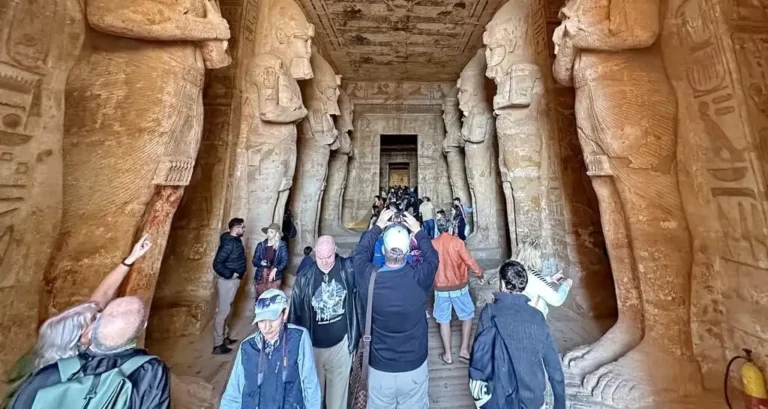Location of the Red Sea

The Gulf of Arabia, often known as the Arabian Gulf, is a seawater entrance of the Indian Ocean located between Africa and Asia. It is approximately 2200 kilometers long and 330 kilometers wide. Many ships pass through the Red Sea because of the Suez Canal, which connects the Red Sea to the Mediterranean Sea and Bab El-Mandab. The Suez Canal artificially connects the Red Sea to the Mediterranean Sea, and while it primarily links to the Indian Ocean, its strategic importance cannot be overstated.
Surrounding the Red Sea are eight different countries:
- Palestine (Israel)
- Egypt
- Jordan
- Saudi Arabia
- Djibouti
- Eritrea
- Sudan
- Yemen
This geopolitical context highlights the canal’s critical role in international trade and maritime navigation. By providing a direct route for ships traveling between Europe and Asia, the Suez Canal significantly reduces travel time and distance, making it a crucial artery for global commerce.
Numerous Red Sea ports, including Jeddah, Suez, Safaga, Aqaba, Eilat, and Port Sudan, dot the coastline. The sea holds more than 1,000 distinct fish species and 200 types of hard and soft corals. Countries like Egypt, Saudi Arabia, Sudan, Yemen, and Israel border the Red Sea.
The Red Sea consists of distinct geographical areas. You have the main body of water, its largest and most central part. A narrow strait connects Africa and Asia, a pivotal point for marine navigation. Scattered islands also add to the sea’s geographical diversity.
Additionally, the Red Sea includes the northern Gulf of Aqaba and the southern Gulf of Suez; both extend this remarkable body of water.
The Red Sea’s Economic Aspects and Marine Life
The Red Sea is a resource-rich body of water, containing significant deposits of petroleum, evaporites, sulfur, phosphates, and heavy metals. Despite these resources, navigation is challenging due to unpredictable water currents and the narrow Bab El-Mandab Strait. The Suez Canal, however, remains a key shipping route.
The northern Red Sea is recognized as one of the world’s seven underwater wonders, celebrated for its unique marine life. It hosts around 1,200 fish species and 250 coral varieties, with a notable percentage of these species being endemic. As the world’s northernmost tropical sea, its waters are home to about 25 islands, including Tiran and Giftun. Nine countries share its coastline. The sea’s water temperature ranges from 20°C to 30°C.
Depth of the Egyptian Red Sea
The Egyptian Red Sea is known for its remarkable depths. On average, the sea is about 500 meters deep, but its deepest point, the Suakin Trough, plunges to 2,211 meters. The sea’s proximity to the Mediterranean through the Suez Canal contributes to its warm and saline waters. Its vibrant colors, which can range from blue-green to reddish-brown, are influenced by factors like algae blooms, adding to the visual appeal of this captivating marine ecosystem.
Tours and Activities Around the Red Sea
Several luxury vacation packages include a trip to the Red Sea, each with different durations and highlights.
- 12-Day Egypt and Red Sea Luxury Adventure: This comprehensive package, priced at approximately $4,166, includes archaeological tours of Cairo, Luxor, and Aswan, a Nile River cruise, and a stay at a luxury Red Sea resort. It combines historical exploration with relaxation at a beachfront hotel.
- 15-Day Egypt Exploration and Hurghada Experience: For a longer trip, this package, which costs around $10,173, offers an extended stay in Egypt. It features visits to historical sites like the Valley of the Kings and a luxury, all-inclusive stay in Hurghada with opportunities for snorkeling and diving.
- 6-Day Red Sea Luxury Vacation Package: A shorter, more focused option, this package is priced at about $3,369. It is designed for those who want a quick but luxurious getaway. It includes a stay at a premium Red Sea resort with daily activities such as water sports, spa treatments, and access to a private beach.
Egypt offers a variety of tour packages that combine historical and natural attractions. Popular destinations include Cairo, Hurghada, and Sharm el-Sheikh. Tours often feature historical sites like the Giza Pyramids and the Egyptian Museum, cruises along the Nile River, and Red Sea activities such as diving, snorkeling, and desert safaris. All-inclusive packages to Sharm el-Sheikh are popular for their convenience, offering everything from luxury accommodations and gourmet dining to guided excursions and spa treatments. The Red Sea itself is famous for its unique diving sites, vibrant coral reefs, and diverse marine life, including 1,200 fish species and 44 types of sharks. These tours can be customized to suit different interests, from adventure-seeking to relaxation.





























